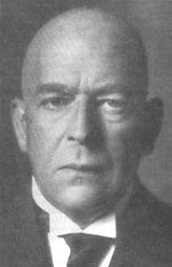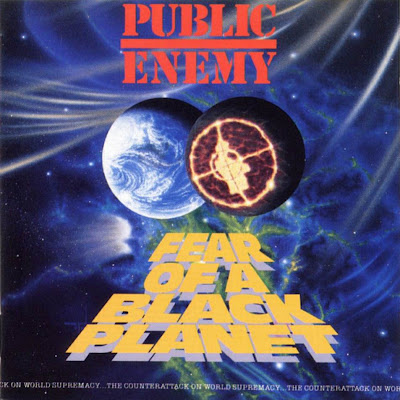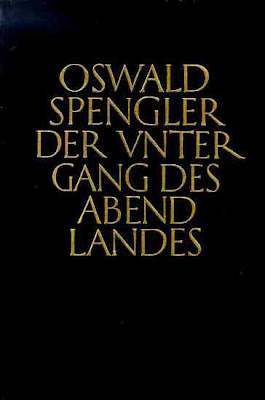>Originally posted June 03, 2007.
The question they keep asking me
How can one so young be so bitter and angry
Well, the answer is plain to see
Maybe if they weren’t so blind they’d see what I see
I see the homeless livin’ out on the street
on every corner they’re asking for money
I try to help them whenever I can
but sometimes I can’t afford to help myself
I see diseases and modern plagues of our times
The greed of our leaders has made them blind
to our problems, they spend millions overseas
people right here are fightin’ wars everyday
I see the whites that hate the blacks
blacks against the jews
race against religion
and they’re all too blind to see
…
So you digest that for a moment. Take a look around. What do you see? It shouldn’t come as a surprise that the world is marching towards death in the fast lane, speaking of morals, art, spiritual beliefs and the environment.
Oswald Spengler (1880-1936), german philosopher and historian, took this look around and came to some mighty fine conclusions. He summarized those in 1918 in his book Der Untergang des Abendlandes (The Decline of The West – Form and Actuality), which later on was completed by a second volume, Perspectives of World History (1923).
Spengler makes two clear points:
• That histories of various cultures can be shown to follow a similar pattern
• That all aspects of a culture – arts, politics, mathematics, science, etc– have related underlying principles, which differ from culture to culture
Spengler looks upon history as an organic cycle, rather than linear, that has to pass through the stages of birth-development-fulfillment-decay-death. In the West we tend to look upon history as something always moving forward, evoluting to the better. This, according to Spengler, is the result of the Western man’s ego, thinking that everything in the past pointed to him, making him the center of the world and so on.
The cyclical movements of history are not those of nations, states, races and events, but of High Cultures, each and everyone of equal importance. So when Spengler speaks of the decline of the West, he speaks of the decline of its culture. Thus, the people live on, but their culture is destroyed.
The eight High Cultures so far are:
• Babylonian
• Egyptian
• Chinese
• Indian
• Mexican (Mayan/Aztec)
• Classical (Greece/Rome)
• Arabian
• Western (European-American)
These eight cultures have all had a life span of 1000 years.
Spengler uses seasons as an analogy to elaborate:
Spring is the birth of religion and where the basic principles of this culture are being formed.
Summer is when acts of lasting value and great accomplishments are being made. This is the peak and the cultural prime.
Autumn is when all this start to break down and turn into Winter. We’re there already.
Politics is motivated by money and moves through imperialism. Science no longer reaches certainties. There is much cultural confusion. The arts do not speak from or to the soul of the people, but rather follow materialistic fashions with lots of changes of styles, not asking much from neither the artist nor the people. After a moment of atheism the people will turn to a renewal of religion and spiritual faith, based on the religion developed in the spring of the culture.

Spengler also uses a “prime symbol” for every culture. For example, the ancient Egyptian culture had the “Way” or the “Path” as symbol, pointing to their preoccupation in art, religion and architecture and its symbolism – the passages of the soul.
The prime symbol of the Western Culture is the “Faustian soul” (soul meaning “mentality”), symbolizing the upward reaching for the infinite, which in itself is an impossible feat (which we all know), and thus we will soon face the final doom and the end of our culture.
And so we’ve entered the Civilization phase which is – as opposed to the Culture phase we’ve just left behind – occupied with materialism, continual wars, mass movements of people, environmental crises, rootlessness and lack of vitality, strenght and intellect.
The history of High Culture is the only history that counts, according to Spengler, because pre- and after-Cultural man is simply without history: as man plunges into materialism and advocates the degeneration of his mentality he loses his historical weight.
Spengler speaks of cities, mega-cities, “megalopolis”, huge urban and suburban centers that breed a mindless mob and suck the life and vitality out of the countryside. Religion starts in the open, moves in to the cities where it loses its gist and then dies in the world-cities, engulfed in the flames of materialism.

Spengler is, just as Nietzsche, seen by some as an intellectual precursor for National Socialistic ideas. However, Sprengler didn’t see any bright future for Europe and his motherland, and he defied the Nazi ideas of racial superiority and anti-semitism until the very end. His thoughts on these subjects can be explored in his work The Hour of Decision (1933).
As for the term “race” used by Spengler, he is quoted saying: “race that one has, not a race to which one belongs. The first one is ethos, the other – zoology”. Apparently not the narrow definition as used by the National Socialists at the time.
On another note, in his book Man and Technics (1931) he is occupied with the development and usage of the technical, a development which is unique to the West. His prediction read that coloured people of the Earth will use the very technology of the West to destroy the West.
Breakdown, 2001
It might be best to be black or just brown
Countdown!

For further reading:
The Oswald Spengler Collection
On The Decline of The West from Wikipedia
